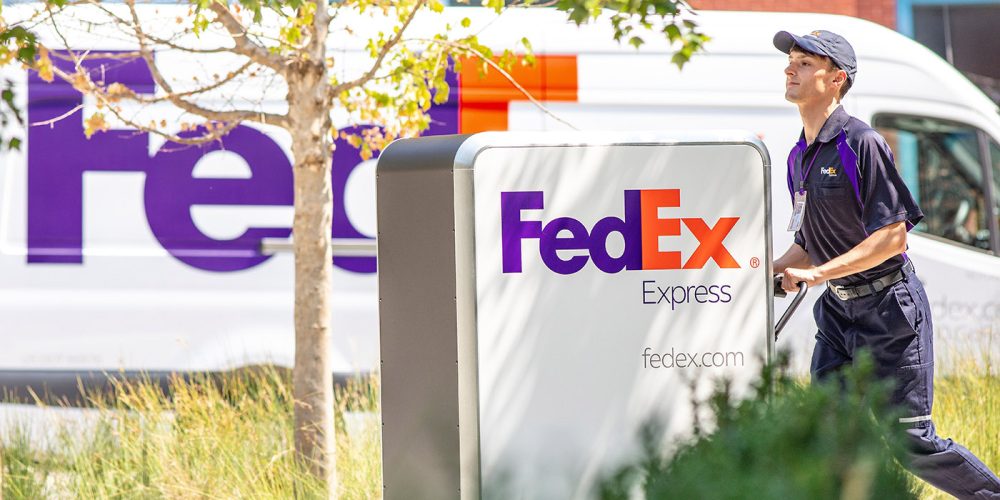
It’s a good day for GM as the company’s BrightDrop brand announces new deals with retail giant Walmart and FedEx. The news comes less than a month after FedEx took delivery of its first batch of BrightDrop EV600 electric vans in Inglewood, California.
The massive Walmart order was announced during a call with BrightDrop president and CEO Travis Katz, FedEx regional president of the Americas and EVP Richard Smith, and Walmart SVP of last mile Tom Ward. Katz was understandably positive throughout the call, citing that BrightDrop’s Ultium-based delivery vans took a mere 20 months to get from concept to production stage, making them one of the most quickly developed GM products ever (if not the quickest) while highlighting BrightDrop’s role in helping Walmart and FedEx meet their stated 2040 sustainability goals.
“E-commerce deliveries are growing at an exponential rate,” explained Katz (paraphrasing, a bit, from notes). “Some experts say that we’ll soon see 100 million packages delivered every day in the US alone, and we’re helping FedEx (our first customer) eliminate those ‘last-mile’ emissions that are the unseen footprint of the e-commerce.”
As for the deal itself, Walmart signed an agreement to reserve 5,000 of BrightDrop EV600 and smaller EV410 electric delivery vans (the exact product mix wasn’t disclosed, but the EV410 won’t be ready until next year) in order to support the company’s growing “last mile delivery network” at 3,400-plus existing retail stores.
FedEx, meanwhile, signed an agreement with BrightDrop reserving priority production for 1,500 more electric delivery vans over the next few years, as part of the shipping company’s “standard schedule of vehicle replacement” (per Smith, on the call). This agreement is in addition to FedEx’s initial reservation of 500 BrightDrop EVs announced last year.

FedEx’s Smith also spent some time on the call heaping praise on BrightDrop’s EP1 electric container. In the company’s Toronto and New York-based pilot programs, they saw a 25% increase in package deliveries per day on routes using the EP1 electric container, allowing FedEx to remove one on-road vehicle from those delivery routes and cut delivery vehicle curbside dwell time in half, “when used on routes in a high-density, vertical urban environment – all while reducing physical strain on couriers.”
Call me a labor sympathizer, but when a company representative talks about reducing back injuries and improving quality of life for their workforce on a call, I’m going to give them an attaboy for it.
BrightDrop isn’t the only option out there
Just like it says above, BrightDrop isn’t the only game in town for either of these companies. While it might make sense that Rivian doesn’t want to bend over backward for Walmart as it expands into the e-commerce space dominated by their biggest investors, there are plenty of other companies out there who might be willing to do so – with even more appearing at just about every other trade show.
During the Q&A session of the call, Barron’s Jim Motavalli asked Smith if FedEx had explored a similar deal with GM’s Amazon-backed competitor Rivian. Smith was a bit cagey about the subject, saying only that there were “some ongoing talks with other companies” before saying that GM’s “footprint,” specifically its broad, nationwide dealer network, made the company feel confident that they’d be able to quickly repair or replace any vehicle that “went down” anywhere in the country.
Electrek’s Take
GM still has the largest dealer network in the US, citing 4,232 dealers on its corporate website at the time of this writing. Most consumers can probably make do with a loaner or rental if they find their Tesla or Lucid is in the shop for repairs, but downtime like that adds up for companies like FedEx that are always on the move. Until the startups have an answer for a service network with that kind of reach, the legacy car brands may have a leg up on the commercial side of the car business – but that window won’t be open forever. GM and Ford need to move, and move now, to stay ahead.
As for Stellantis and Ram, it might already be too late for them.
Photo: BrightDrop
Subscribe to Electrek on YouTube for exclusive videos and subscribe to the podcast.
Author: Jo Borras
Source: Electrek



